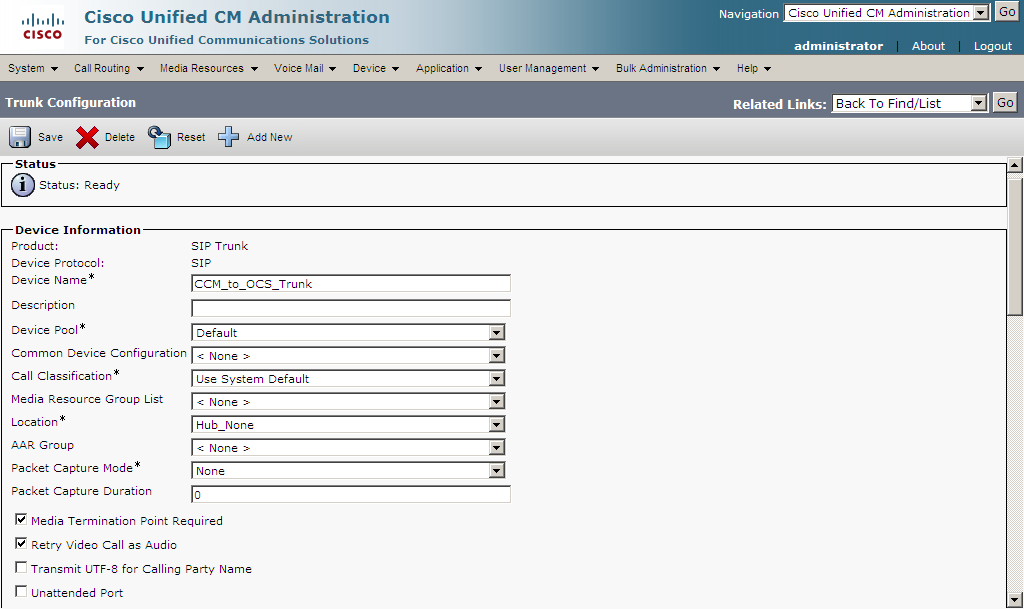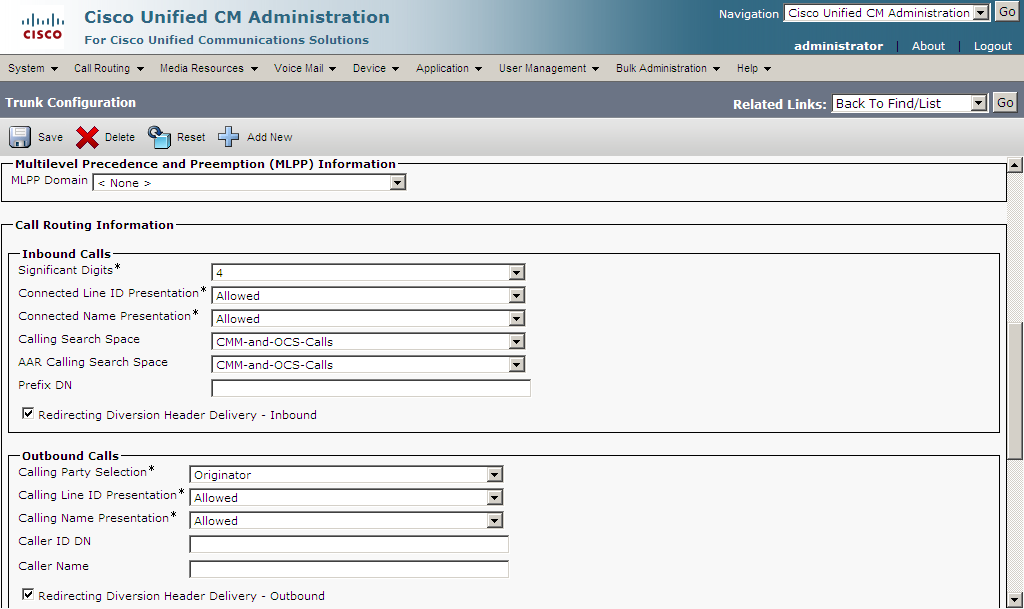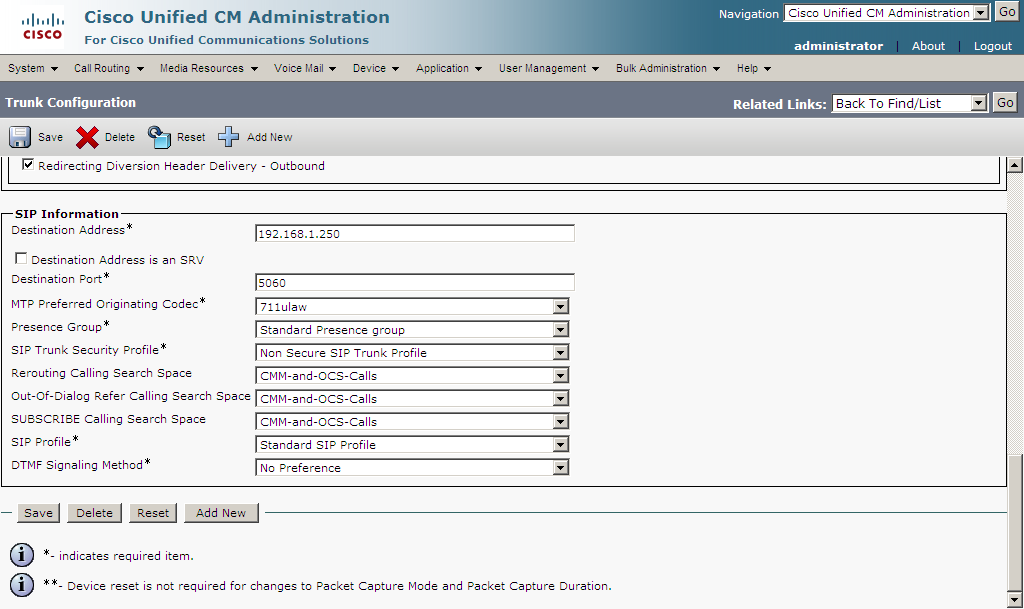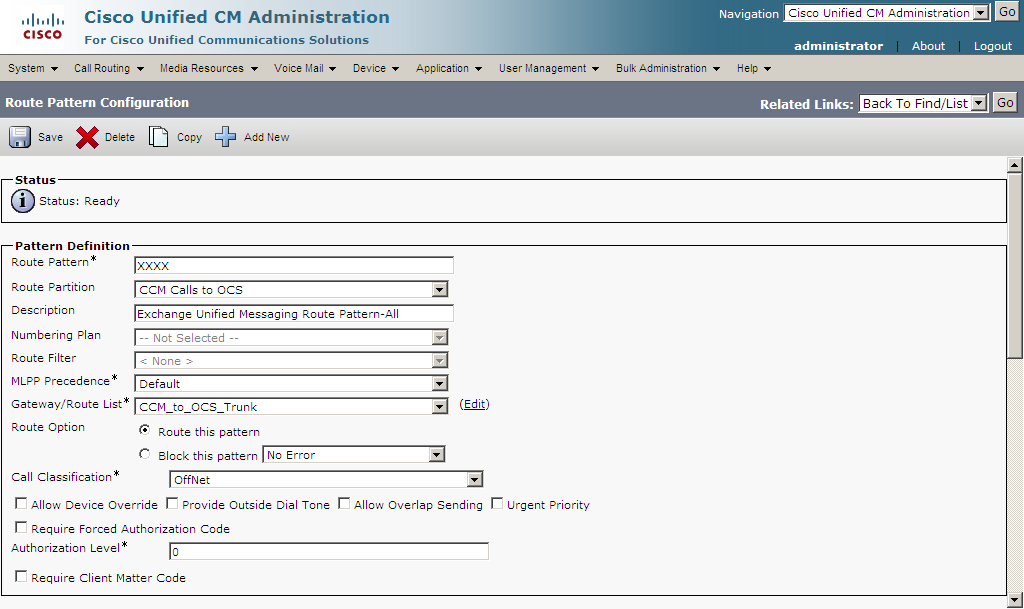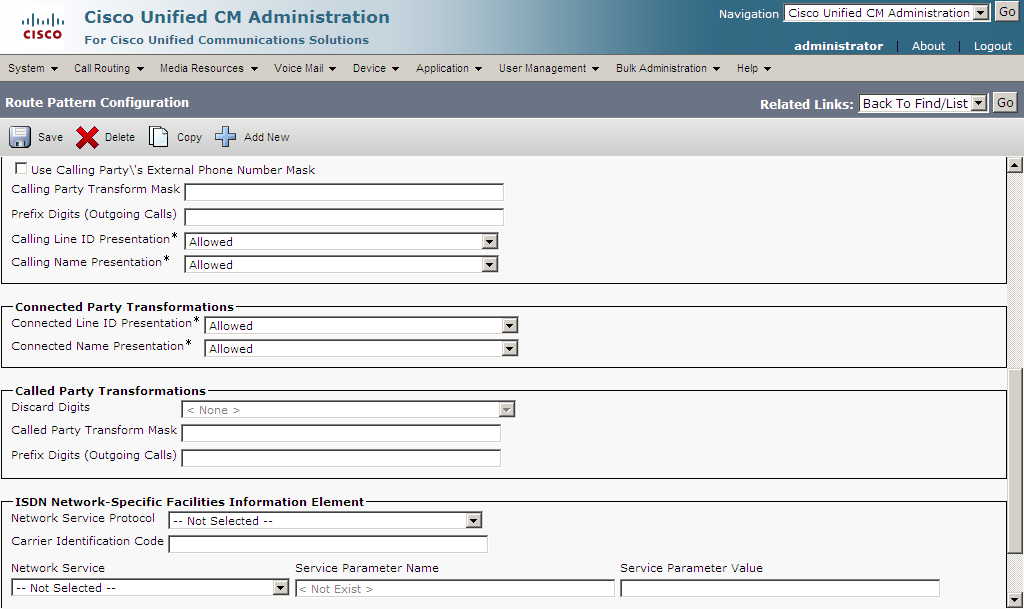I am working with a client who is using Cisco CUCM with Cisco Phones, along with Microsoft Exchange 2007 voice mail on the UM , but when you divert the phone to voicemail you are not prompted with the users voicemail prompt – you are prompted with the Subscriber access greeting of “ Welcome , you are connected to Microsoft exchange ,…etc )
Usually when you call someone and there is no answer then you are transferred to the Pilot number, the extension of the person you are calling is sent also in the request so that you would be directly transferred to the users voice mail not to the Welcome greeting.
This Problem Happens when Diverted Calls are not accepted because both sides cannot agree on DTMF handling , the MTP is important, because it deals with differences in how DTMF is signaled between the phones and gateways and the sip trunk
Just make sure the following on the Cisco SIP trunk:
- Accept Out-of-Dialog REFER
- Accept unsolicited Notification
- Accept Replaces Header
- Have the SIP trunk configured to use MTP, once I’d configured MTP and MRG/MGRL
The changes detailed below are based on a new installation of Call Manager 5. As this environment been created for the purpose of testing the integration between platforms, it contains only minimum configuration. The required Changes are with:
· Media Termination Point (MTP)
· Changes to security profile
Media Termination Point: The Cisco Call Manager installation builds the default media termination point.
Media Resource Group: Create a media resource group “MRG_CCM5” and add the media resource (MTP) to the group. Multicast is not required.
Media Resource Group List: Create a media resource group list “MRGL_CCM5” and add the media resource group “MRG_CCM5” to the list.
Device Pools: By default Cisco Call Manager creates the “default” device pool. Open the device pool “default” and select the new media resource group list “MRGL_CCM5”.
SIP Trunk Security Profiles: Copy the “Non Secure SIP Trunk Profile” to “E2K7 Non Secure SIP Trunk Profile” and enable “Accept Unsolicited Notifications”.
Partition Configuration: Create a Class of Control Partition “Local”.
Calling Search Space: Create a Class of Control Calling Search Space “CCS_Local” and add the Partition “Local” to the calling search space.
Trunk Configuration:
|
Trunk Configuration General |
Setting |
|
Device Name |
E2K7 |
|
Description |
Exchange UM |
|
Device Pool |
Default |
|
Call Classification |
Use System Default |
|
Media Resource Group List |
<None> |
|
Location |
Hub_None |
|
AAR Group |
<None> |
|
Packet Capture Mode |
None |
|
Packet Capture Duration |
0 |
|
Media Termination Point Required |
Enabled |
|
Retry Video Calls as Audio |
Disabled |
|
Transmit UTF-8 for Calling Party Name |
Disabled |
|
Unattended Port |
Disabled |
|
MLPP Domain Information |
<None> |
|
Trunk Configuration |
Setting |
|
Inbound Calls |
|
|
Significant Digits |
All |
|
Connected Line ID Presentation |
Default |
|
Connected Name Presentation |
Default |
|
Calling Search Space |
CCS_Local |
|
ARR Calling Search Space |
<None> |
|
Prefix DN |
<Blank> |
|
Redirecting Diversion Header Delivery |
Disabled |
|
Outbound Calls |
|
|
Calling Party Selection |
First Redirect Number |
|
Connected Line ID Presentation |
Default |
|
Connected Name Presentation |
Default |
|
Caller ID DN |
<Blank> |
|
Caller Name |
<Blank> |
|
Redirecting Diversion Header Delivery |
Enabled |
|
Trunk Configuration SIP Information |
Setting |
|
Destination Address |
<IP Address of E2K7 Server> |
|
Destination Address is an SRV |
Disabled |
|
Destination Port |
5060 |
|
MTP Preferred Originating Codec |
711alaw |
|
Presence Group |
Standard Presence Group |
|
SIP Trunk Security Profile |
E2K7 Non Secure SIP Trunk Profile |
|
Rerouting Calling Search Space |
<None> |
|
Out-of-Dialog Refer Calling Search Space |
<None> |
|
SUBSCRIBE Calling Search Space |
Default |
|
SIP Profile |
Standard SIP Profile |
|
DTMF Signalling Method |
No Preference |
